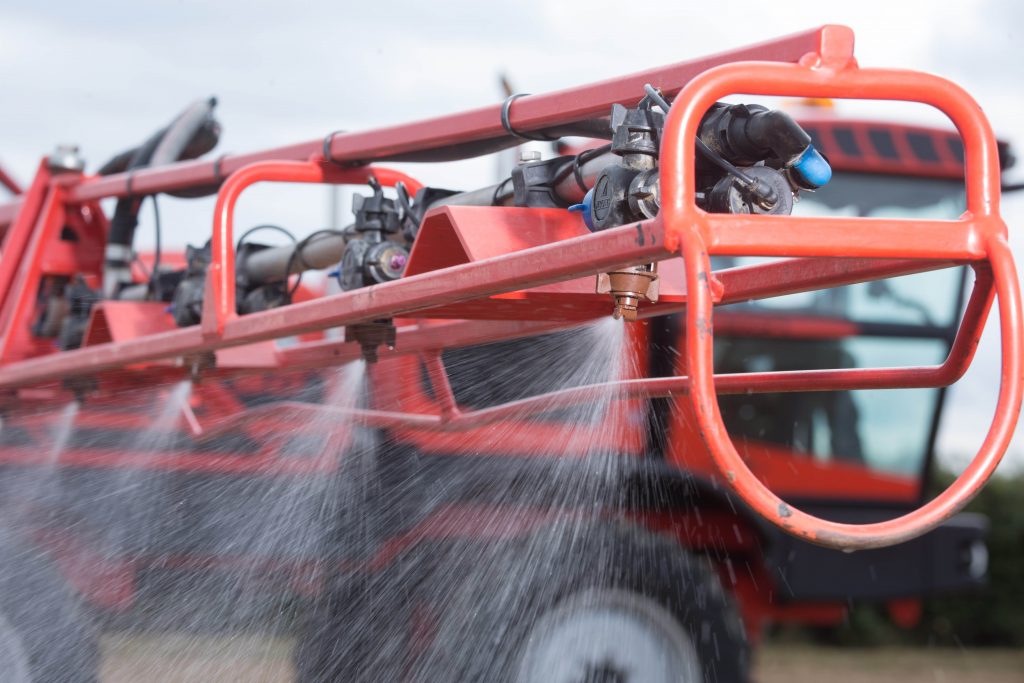90% reduced drift for 50% cost
11th August 2017
Pre-emergence herbicide application using 90% drift reducing nozzle technology can deliver significantly better Black-grass control, through improved soil surface coverage and timing. Final results of new trials at the Syngenta

Pre-emergence herbicide application using 90% drift reducing nozzle technology can deliver significantly better Black-grass control, through improved soil surface coverage and timing. Final results of new trials at the Syngenta Black-grass Innovation Centre in Cambridgeshire have highlighted the huge potential improvements in weed control from focusing on application techniques.
Such is the opportunity for enhancing sprayer performance this season that Syngenta is immediately offering a half-price deal on the trials’ best performing 90% drift reducing nozzle, for all farmers and spray operators to use on their pre-emergence applications.
Syngenta Application Specialist, James Thomas, reported the dedicated application trials, looking at interacting computations of boom height, forward speed, water volume and nozzle selection, revealed a clear message for growers – Go Low; Go Slow; Get Covered.
James’ essential Rules for Pre-Emergence Herbicide Application are:
- 50 cm maximum boom height
- Less than 12 km/hr forward speed
- 200 l/ha water volume
- Use 90% drift reducing nozzles
“In the past some operators have sought out finer spray patterns to increase the number of droplets, but small droplets are inherently susceptible to drift that can clearly affect product efficacy and reduce weed control – which will hit yields and increase the risk of increasing resistance.
“We have shown in trials that coarser droplets from 90% drift reducing air induction nozzles are very good at hitting the soil surface target, and delivering exceptional levels of black-grass control, in a very challenging high weed and resistance pressure situation.”
Given the importance of the results and potential for farmers to achieve better grass weed control, James believed the nozzle technology should be as widely available and adopted by as many sprayer operators as possible this autumn.
James Thomas added: “We recognise the need for all farmers to improve black-grass control across the country and at every opportunity in the rotation, and for the whole industry to adopt the best possible application techniques quickly and efficiently. Making the Syngenta 90% drift reducing nozzle offer open to all growers is a huge step in that direction.”
The half-price nozzle offer is open to all farmers, with no obligation to buy Syngenta’s leading Defy pre-emergence grass-weed herbicide. “Black-grass Innovation Centre trials across the UK have consistently shown including Defy in a pre-emergence herbicide stack will physically and economically improve levels of weed control in the short and long-term, so it always makes sense for growers to use it.”
Nozzles supplied in the Syngenta exclusive offer will be the latest version of the Teejet TTI 110-05, which will deliver a water volume of 200 l/ha when operated at 2.0 bar with a forward speed of 10 km/hr – calculated from the trials as offering the optimum balance of sprayer efficiency and herbicide efficacy. The Teejet TTI Nozzle has a LERAP 3* rating for operation from 1.0 to 7.0 bar.
James advocated the 90% drift reducing technology makes real advance in pre-emergence weed control if spray conditions are in any way compromised. “But they should still be operated at the right height – of 50 cm above the soil surface – and forward speed of less than 12 km/hr.
“The key is to get the maximum spray on to the target soil surface in the field – which will in itself enhance results. It also offers important environmental protection for surrounding areas,” he added. “We would urge all growers and operators to take advantage of the half-price offer and start using the nozzle this season.”
If you’ve seen the Barton-site Black-grass application trials, or had experience of 90% drift reducing nozzles, join the conversation to help other sprayer operators on #lowslowcovered
